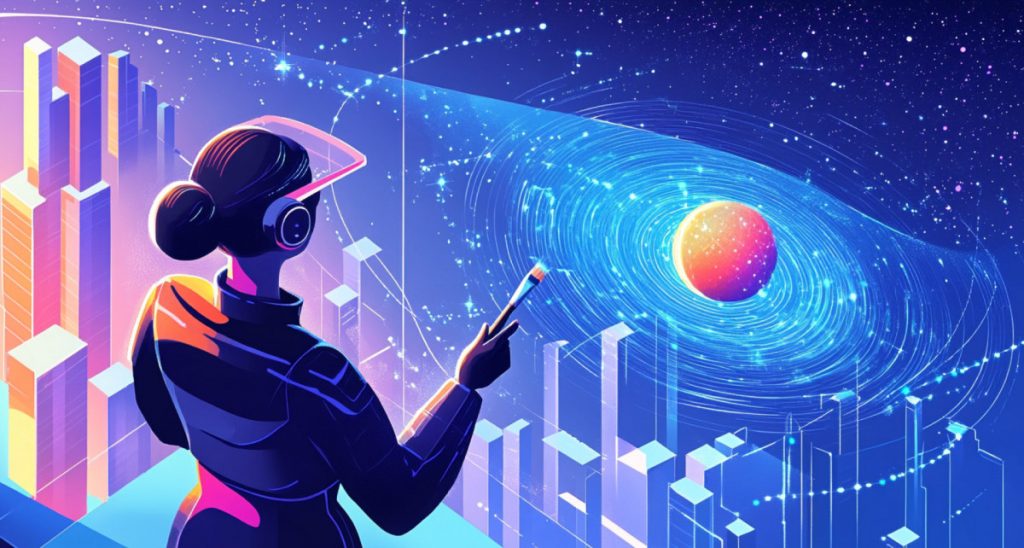The NFT industry has shifted dramatically since its early hype cycle. In 2025, collectors no longer want random pixel art or low-effort projects—they expect unique concepts, storytelling, and visual innovation. This is where artificial intelligence (AI) has become a game-changer. Neural networks now allow creators to generate thousands of images, maintain stylistic consistency, and even experiment with interactive art.
Below is a breakdown of 15 AI platforms that are helping creators design next-generation NFT collections.
1. MidJourney
Known for its cinematic and surreal style, MidJourney is a favorite among NFT artists. It excels at concept art, fantasy themes, and detailed illustrations that stand out in marketplaces.
2. Stable Diffusion
As an open-source model, Stable Diffusion offers creators full control. With custom training, artists can build collections in a consistent style, ensuring brand identity across thousands of NFTs.
3. DALL·E 3
Developed by OpenAI, DALL·E is intuitive and accurate with prompts, making it suitable for polished, professional-looking NFT art.
4. Runway ML
Goes beyond static images by enabling AI video generation. Perfect for NFT collections that experiment with moving art or dynamic metadata.
5. NightCafe Studio
Accessible and community-driven, NightCafe supports both beginners and experienced users. Its reward system encourages experimentation.
6. Fotor AI Art Generator
Combines AI art creation with editing features, allowing quick preparation of NFT drops with minimal effort.
7. DeepAI
Offers a range of models for varied aesthetics, from cartoon-like art to abstract paintings.
8. Artbreeder
Best for character-driven projects. Artists can “breed” new faces or avatars, making it a natural fit for PFP-style collections like Bored Apes.
9. Designs.ai
Geared towards branding, this suite helps NFT creators build not just art but also cohesive logos, covers, and marketing visuals.
10. Jasper Art
Integrates with content generation tools, ideal for NFT projects with strong storytelling elements.
11. Canva AI
Although not a native NFT tool, Canva’s AI image generator helps with previews, social content, and collection presentation.
12. Playform IO
Focuses on experimental, generative art. Artists can train their own models, giving them distinctive aesthetics.
13. WOMBO Dream
A mobile-friendly app for quick idea generation and casual NFT experimentation.
14. Hypotenuse AI
Well-suited for themed projects. By generating images with consistent patterns, it helps creators design NFTs that “belong together.”
15. StarryAI
Tailored for NFT collectors and artists. It simplifies minting and has built-in blockchain compatibility.
🔑 How AI Changes NFT Creation
- Scalability: AI makes it possible to create 10,000+ unique artworks with slight variations—ideal for generative collections.
- Consistency: With fine-tuned models, creators can lock in a visual identity.
- Accessibility: Even those without design skills can launch a professional-looking collection.
- Experimentation: AI enables interactive or evolving NFTs (e.g., avatars that change appearance).
Risks and Challenges
- Copyright issues: Using brand-related prompts (e.g., “Disney-style”) can raise legal problems.
- Oversaturation: Easy NFT generation means marketplaces are flooded—only projects with strong communities succeed.
- Authenticity concerns: Buyers may question the artistic value of AI-generated NFTs.
In 2025, AI is not just a tool—it’s becoming the backbone of NFT art. Future trends point toward:
- Interactive NFTs that evolve in real time.
- Hybrid collections blending human creativity with AI.
- AR/VR integration, where collectors can experience their NFTs in immersive environments.
For creators, mastering these 15 AI platforms is no longer optional—it’s the difference between being lost in the noise or standing out in the next wave of digital art.
